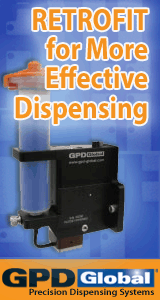Printed Circuit Board Assembly & PCB Design Forum
SMT electronics assembly manufacturing forum.
- SMTnet
- »
- Electronics Forum
- »
- Informations about Traceability
Informations about Traceability
![]() Hello everyone!
My first day as a registered user and the f...
- May 16, 2003
by
Mario Schaarschmidt
Hello everyone!
My first day as a registered user and the f...
- May 16, 2003
by
Mario Schaarschmidt
![]()
![]()
![]() Traceability of raw material, personnel and equipment perfor...
- May 16, 2003
by
PeteC
Traceability of raw material, personnel and equipment perfor...
- May 16, 2003
by
PeteC
![]()
![]()
![]() In addition to the information provided above, we put a bar ...
- May 16, 2003
by
In addition to the information provided above, we put a bar ...
- May 16, 2003
by
![]()
![]() In agreeance with the previous postings I would like to add ...
- May 16, 2003
by
swagner
In agreeance with the previous postings I would like to add ...
- May 16, 2003
by
swagner
![]()
![]()
![]() First of all thanks to everyone who has replied, especially ...
- May 22, 2003
by
Mario Schaarschmidt
First of all thanks to everyone who has replied, especially ...
- May 22, 2003
by
Mario Schaarschmidt
![]()
![]()
![]() The following are some companies that supply MRPII / ERP pro...
- May 22, 2003
by
PeteC
The following are some companies that supply MRPII / ERP pro...
- May 22, 2003
by
PeteC
![]()
![]()
![]() Good Points made. Keen observation. Work-life is mainly abou...
- May 24, 2003
by
iman
Good Points made. Keen observation. Work-life is mainly abou...
- May 24, 2003
by
iman
![]()
![]()
![]() Mario,
Hi,
basic point about all quality systems, is the...
- May 28, 2003
by
iman
Mario,
Hi,
basic point about all quality systems, is the...
- May 28, 2003
by
iman
![]()
Mario Schaarschmidt
- SMTnet
- »
- Electronics Forum
- »
- Informations about Traceability







